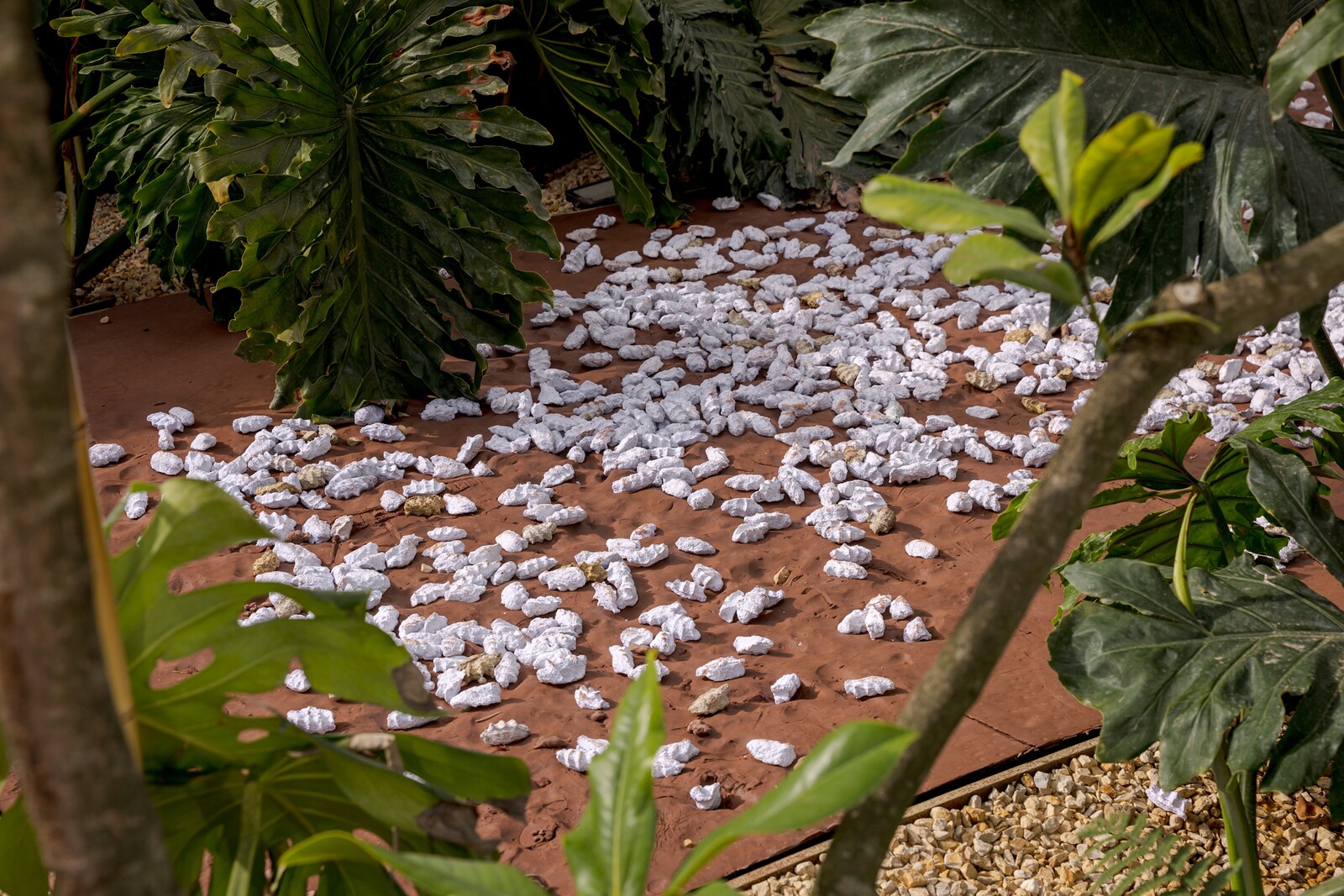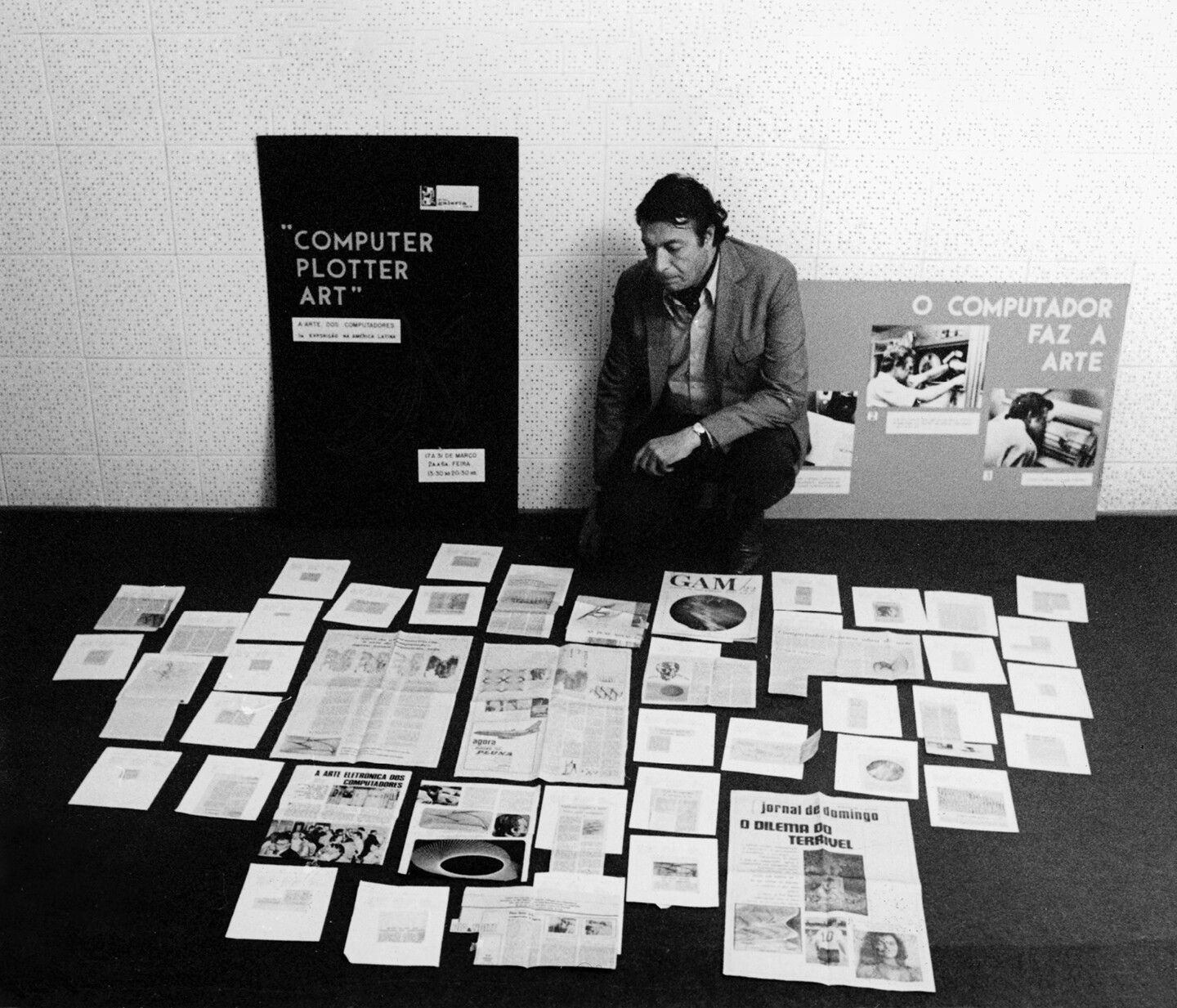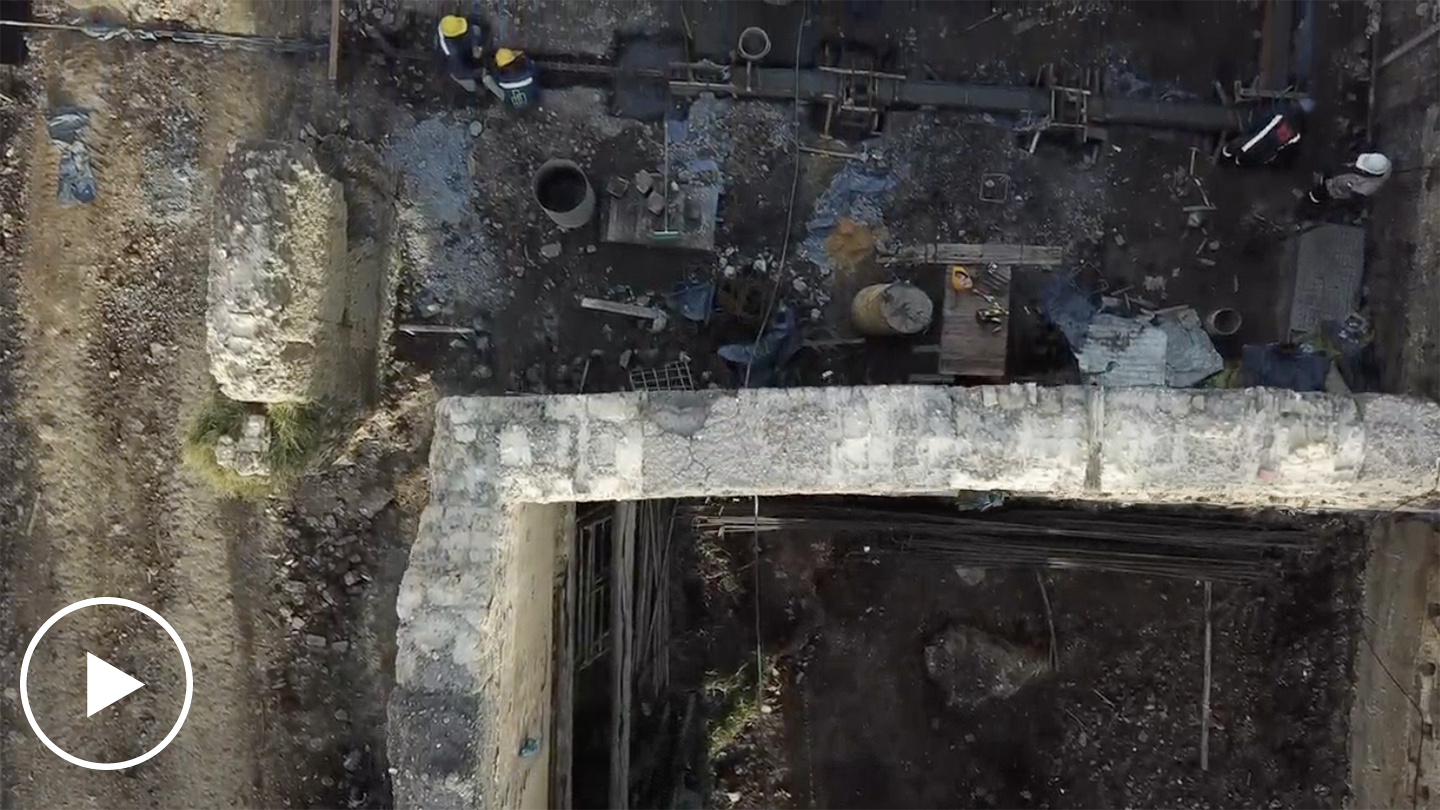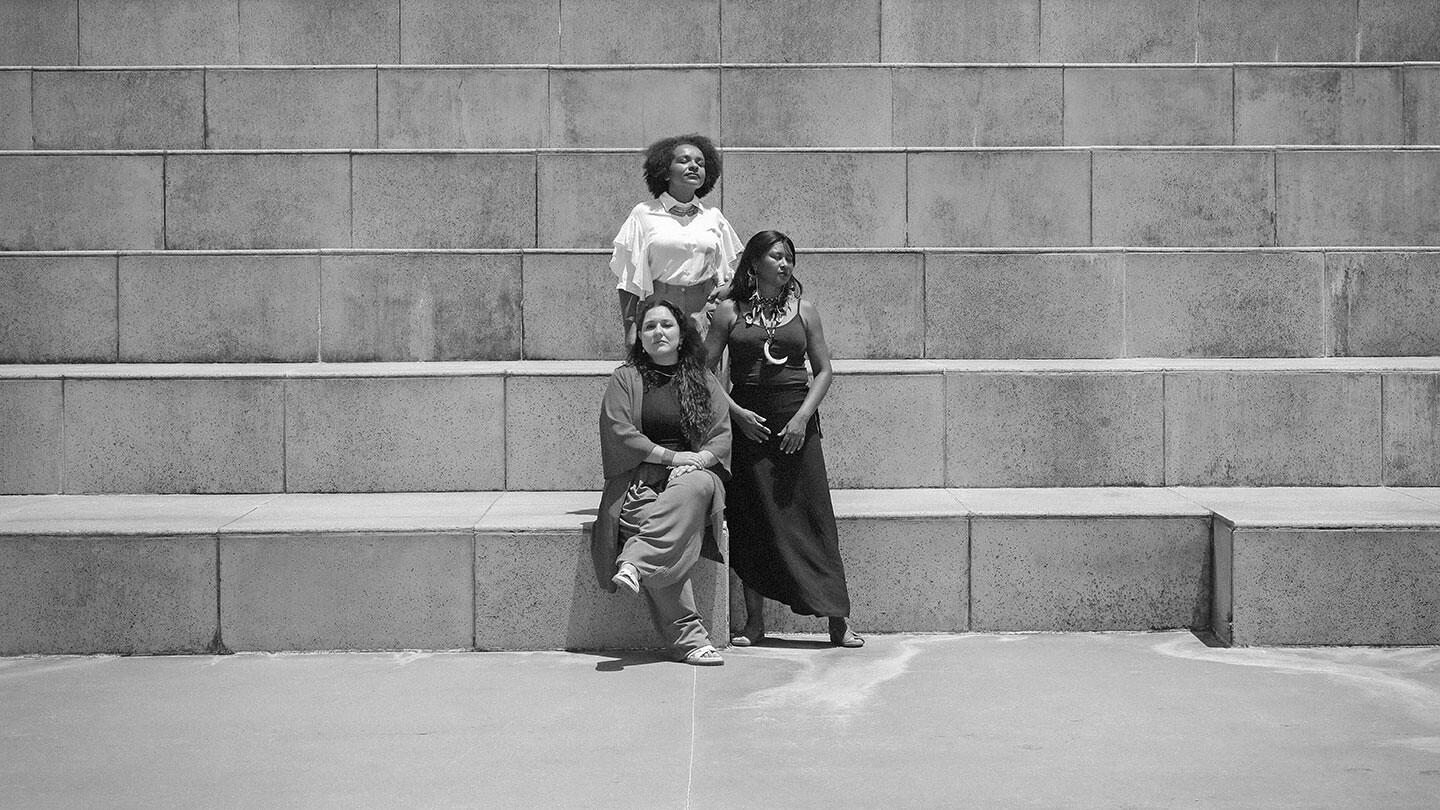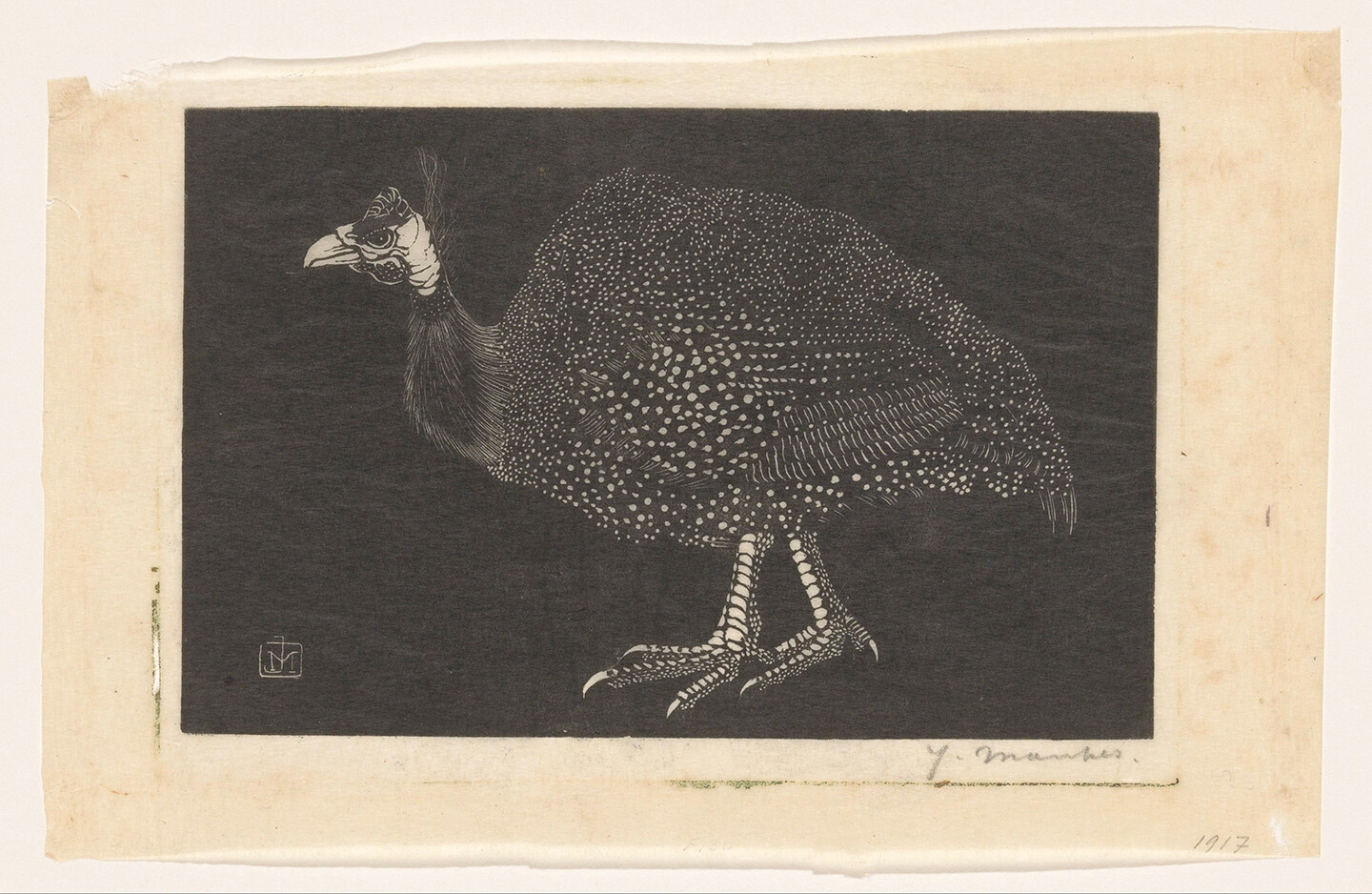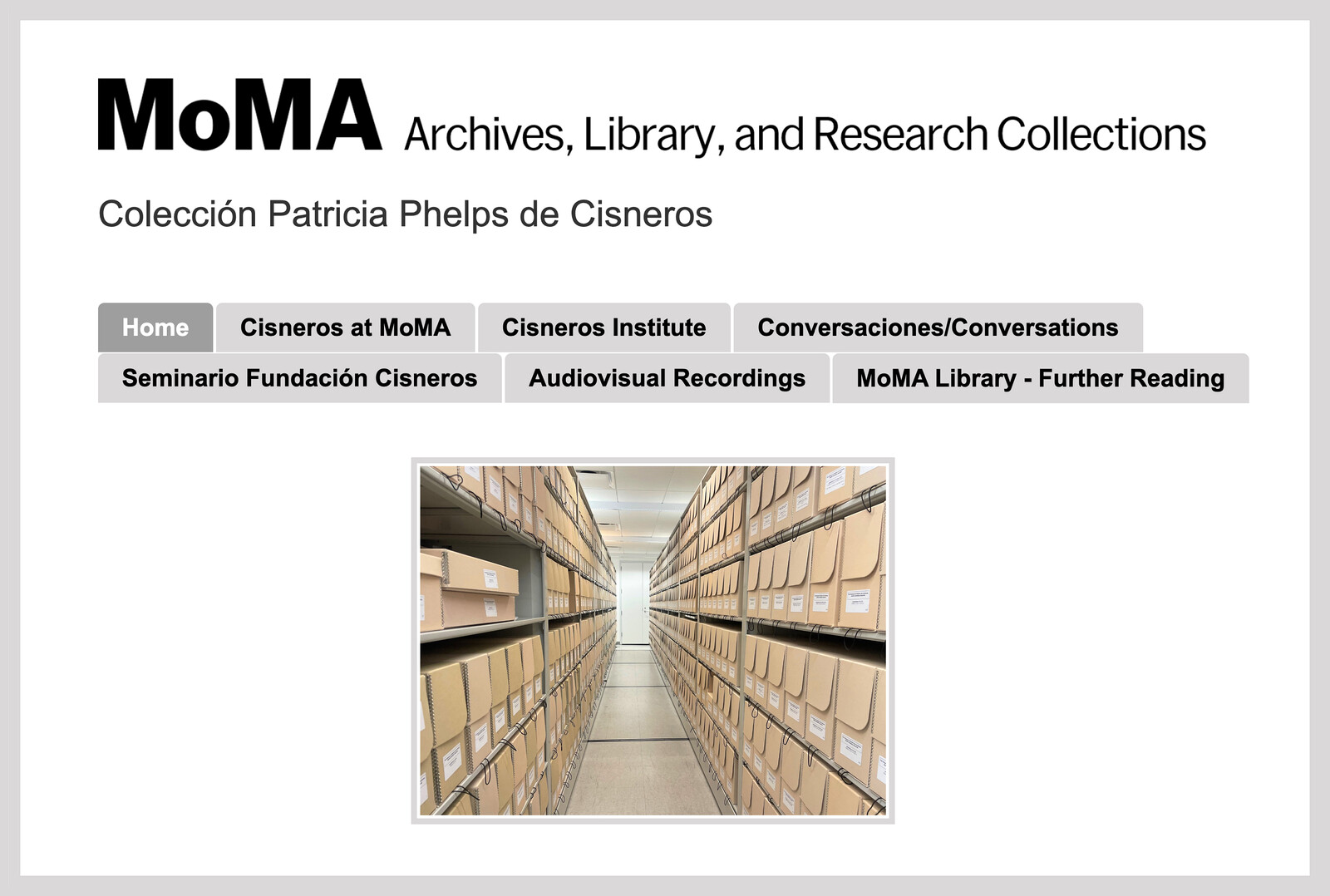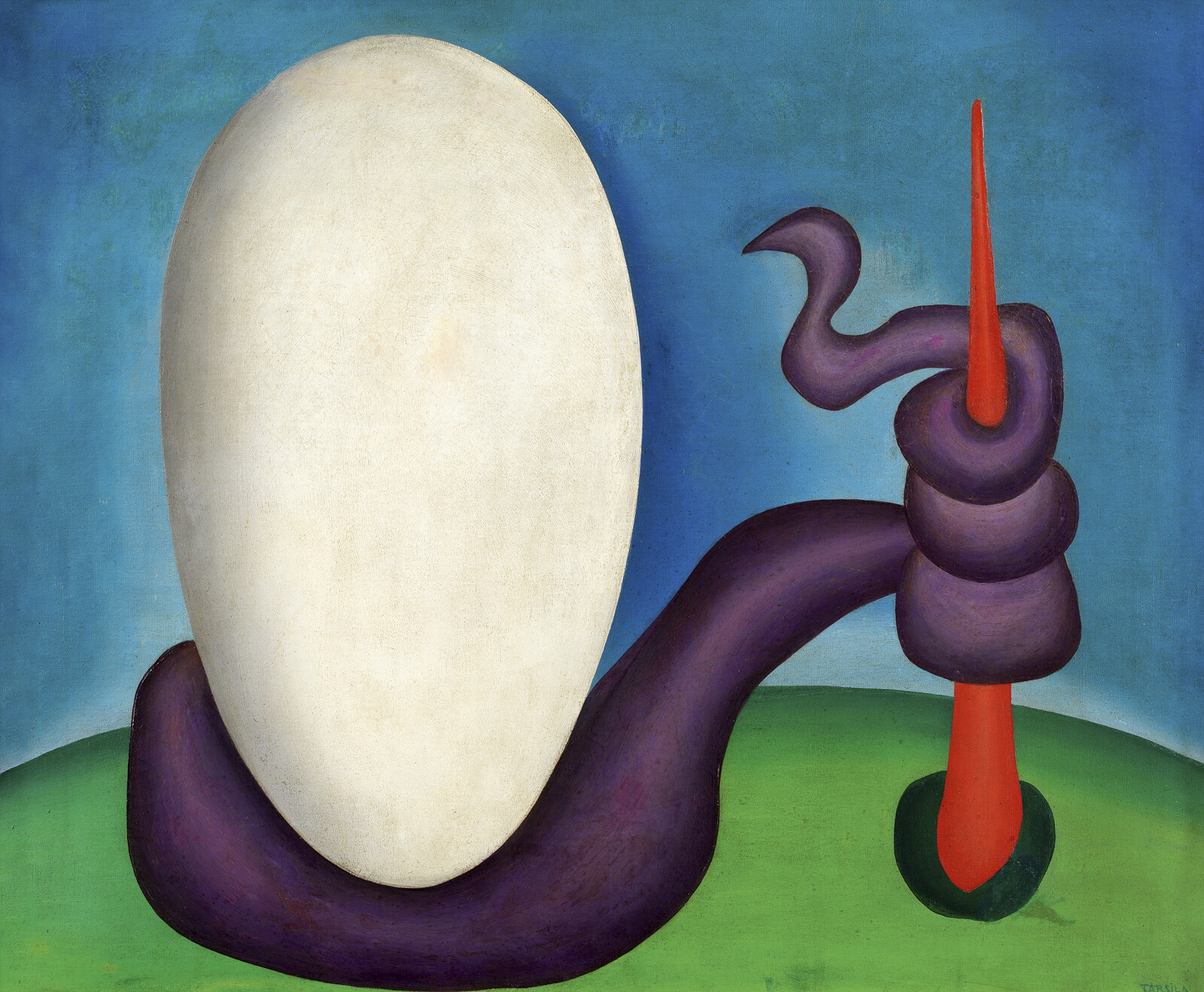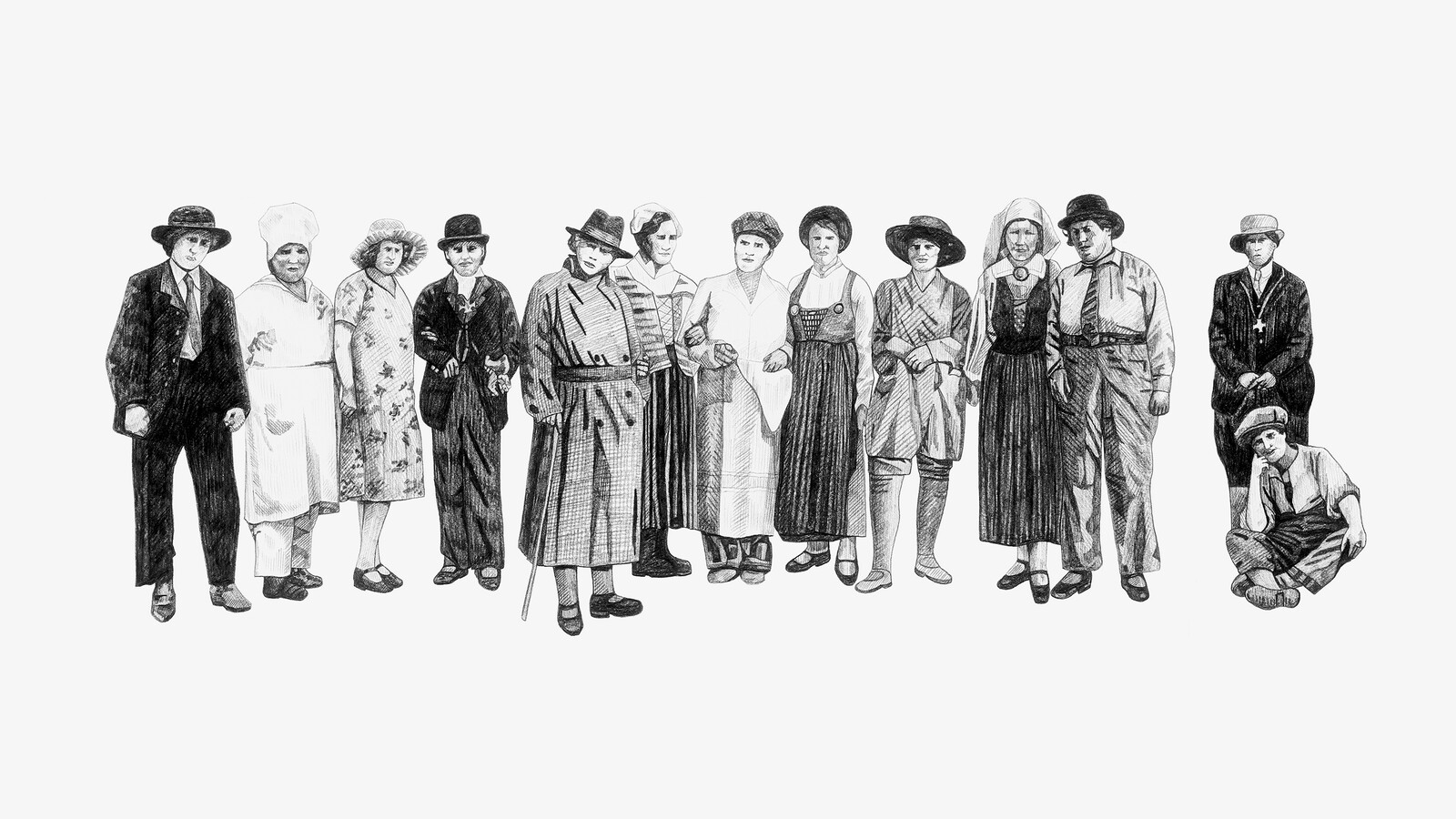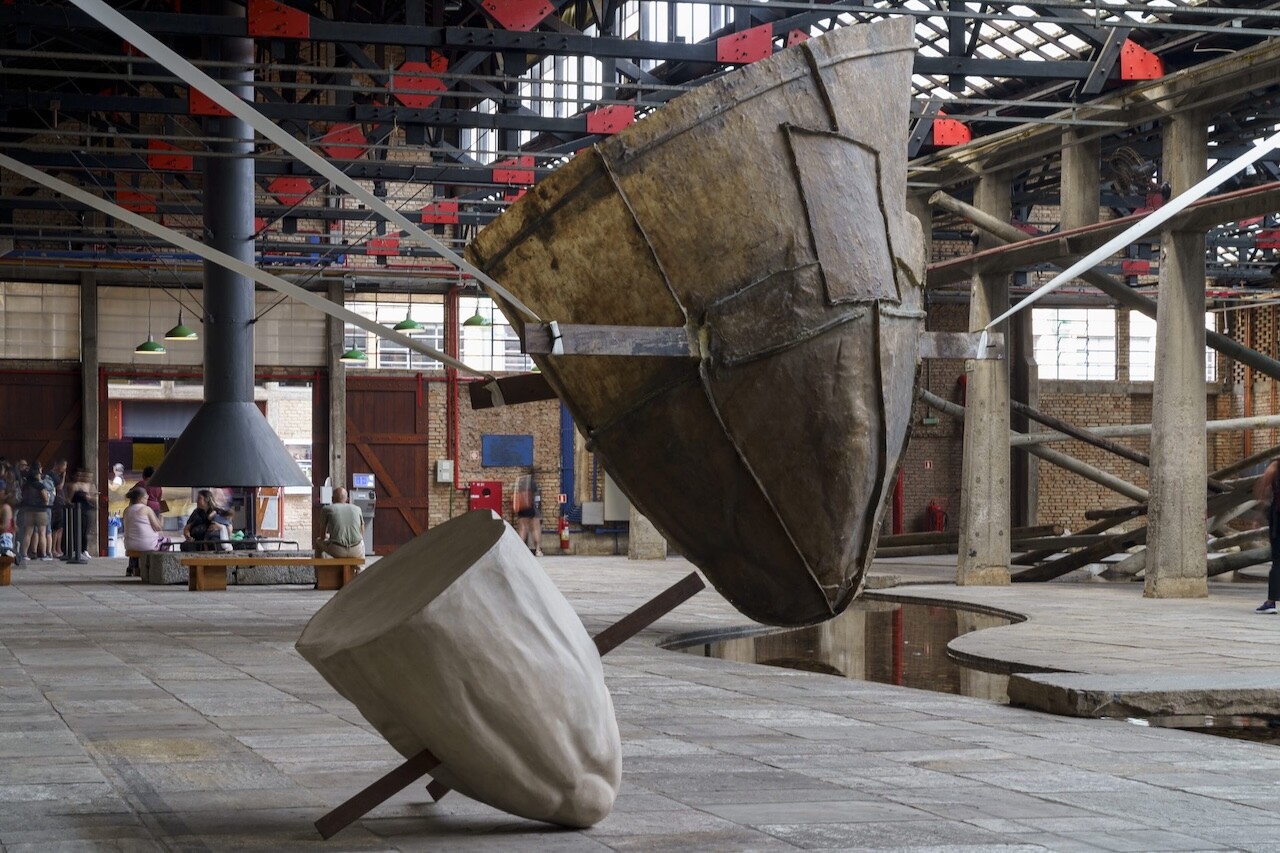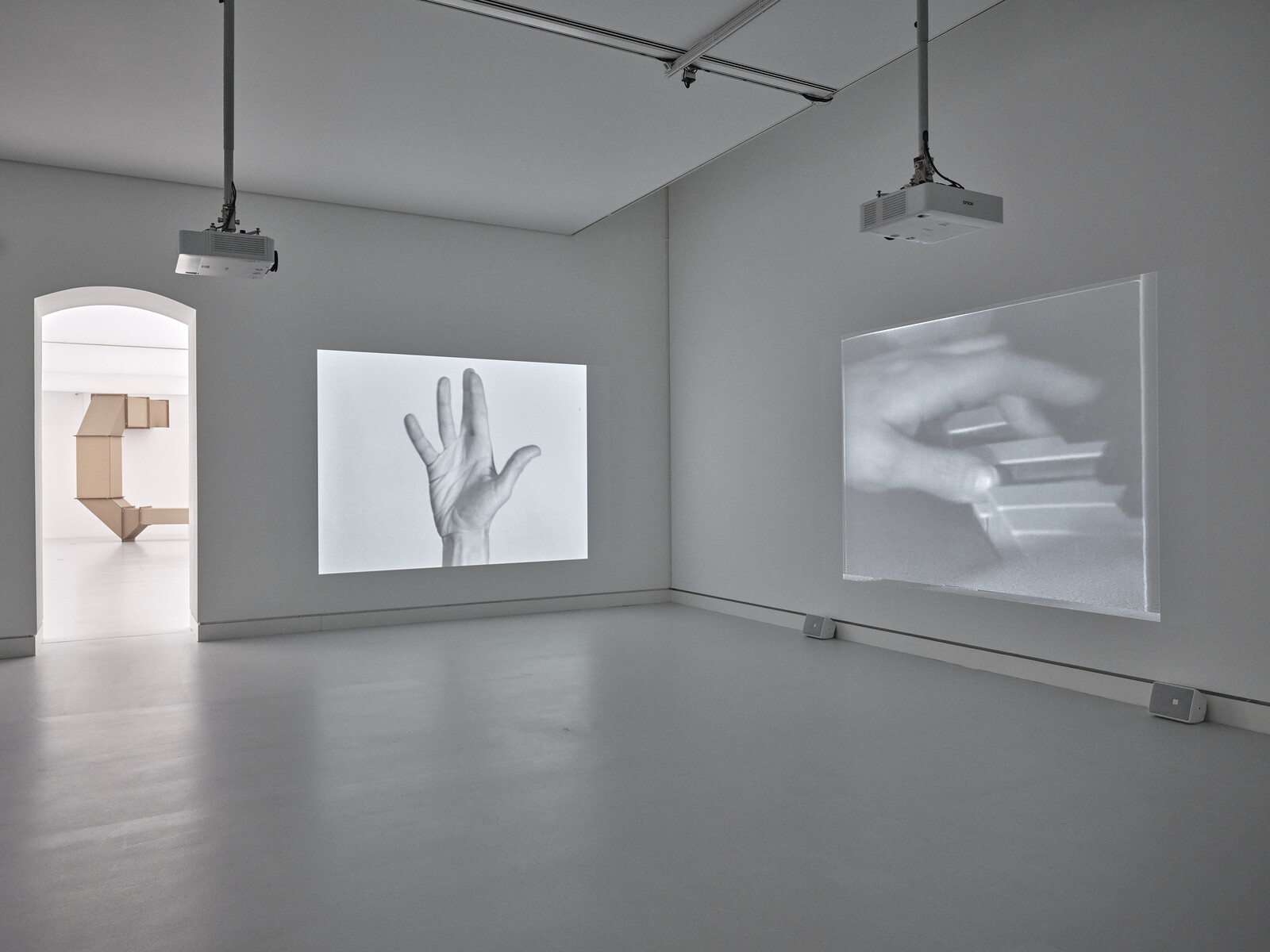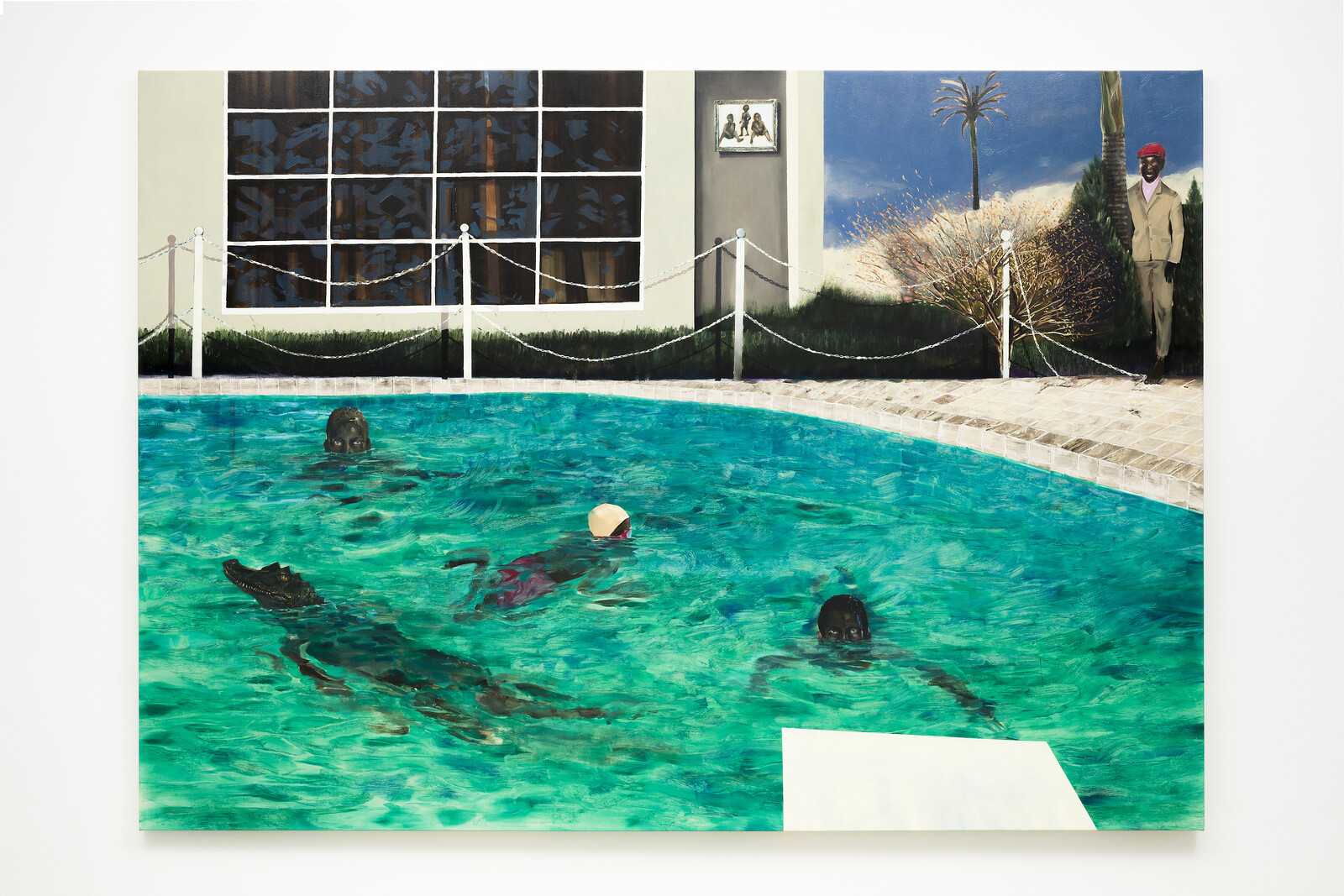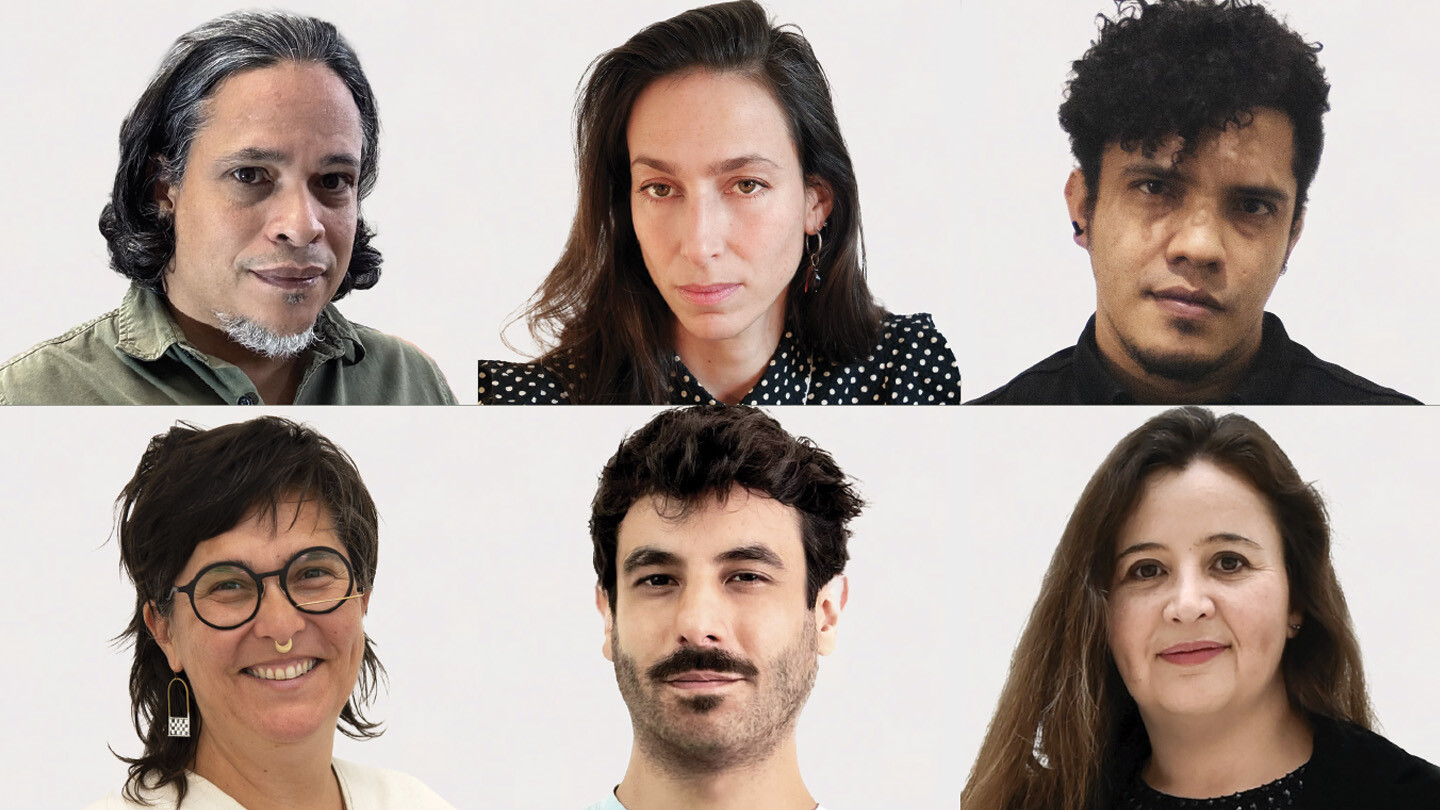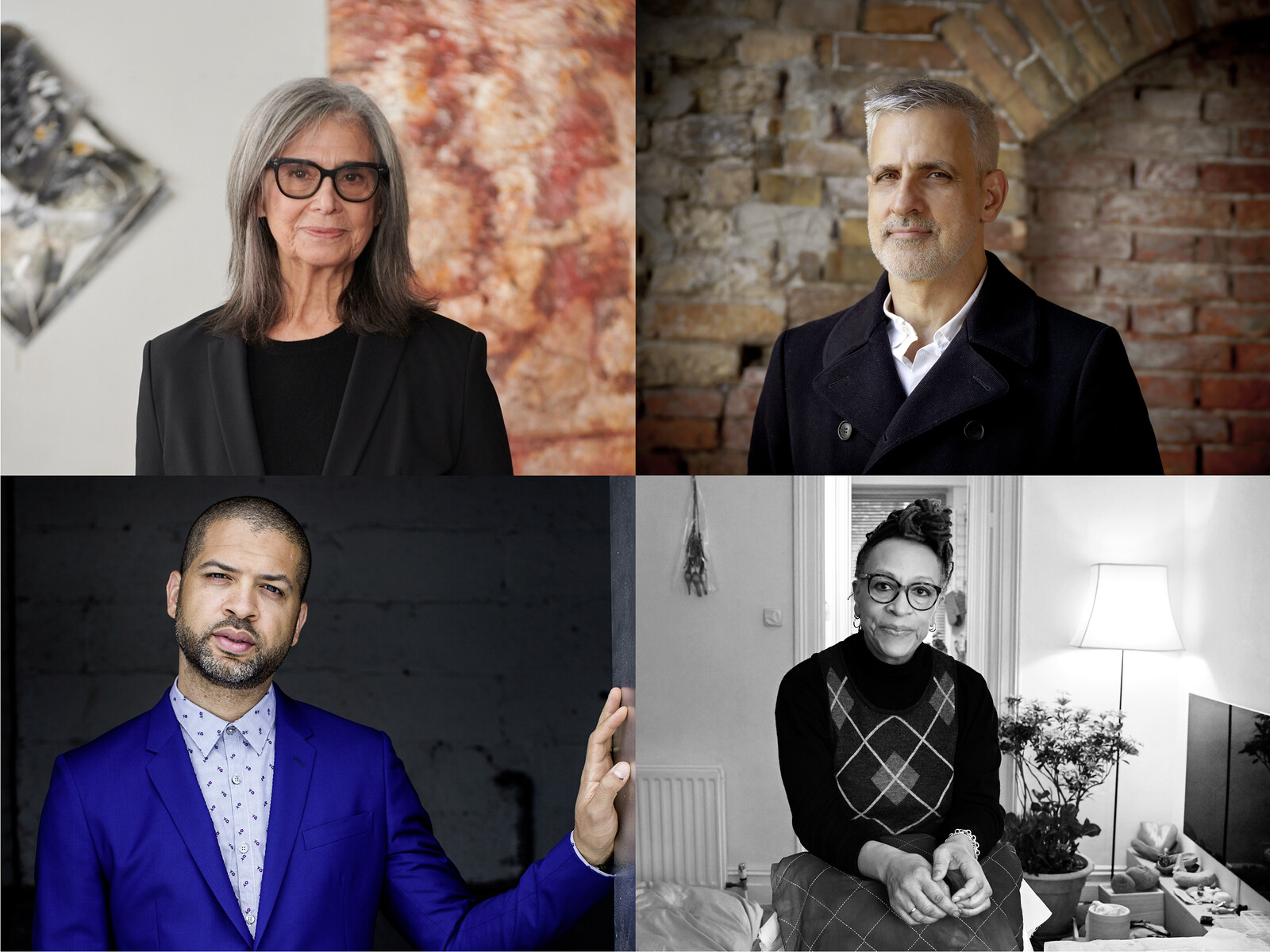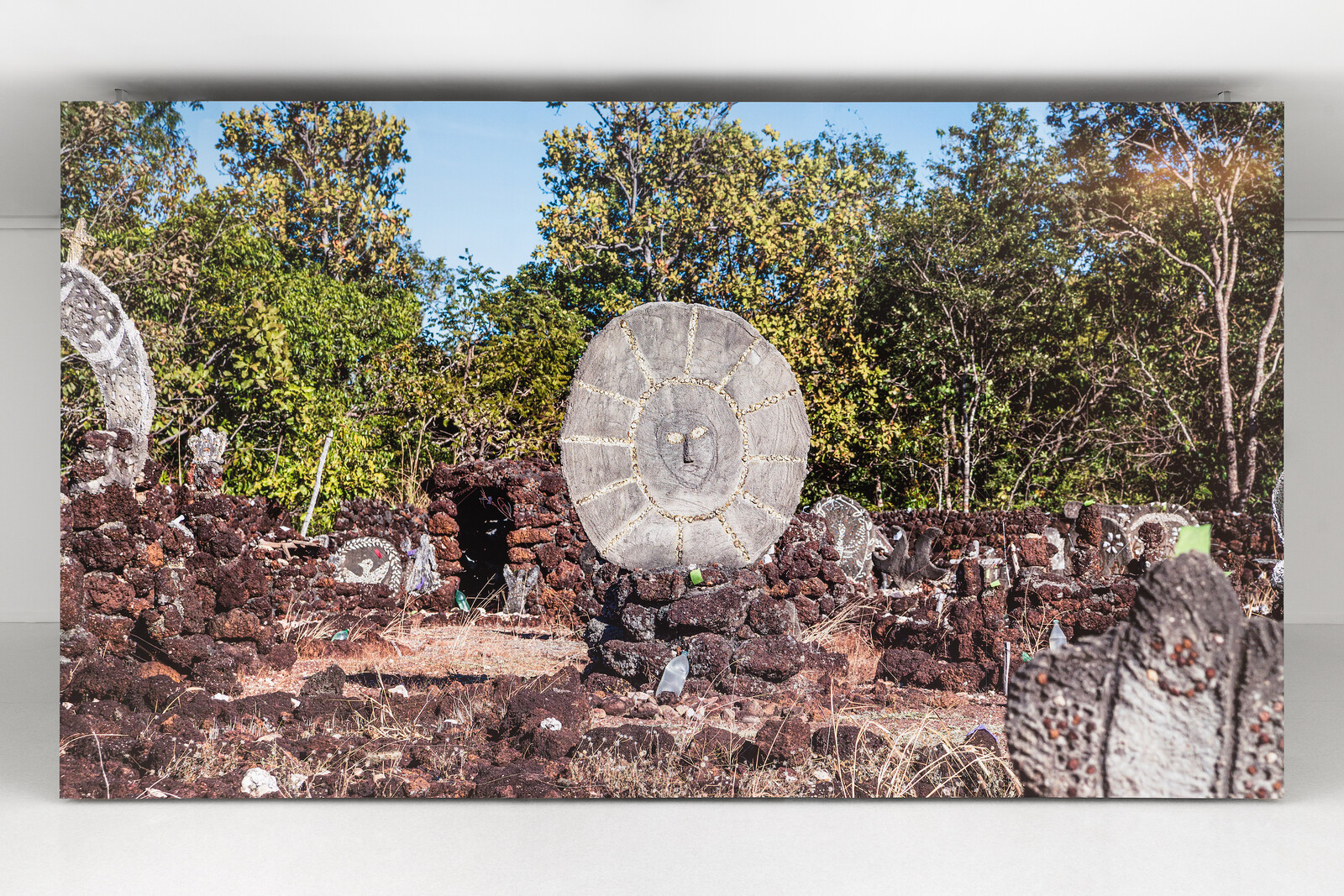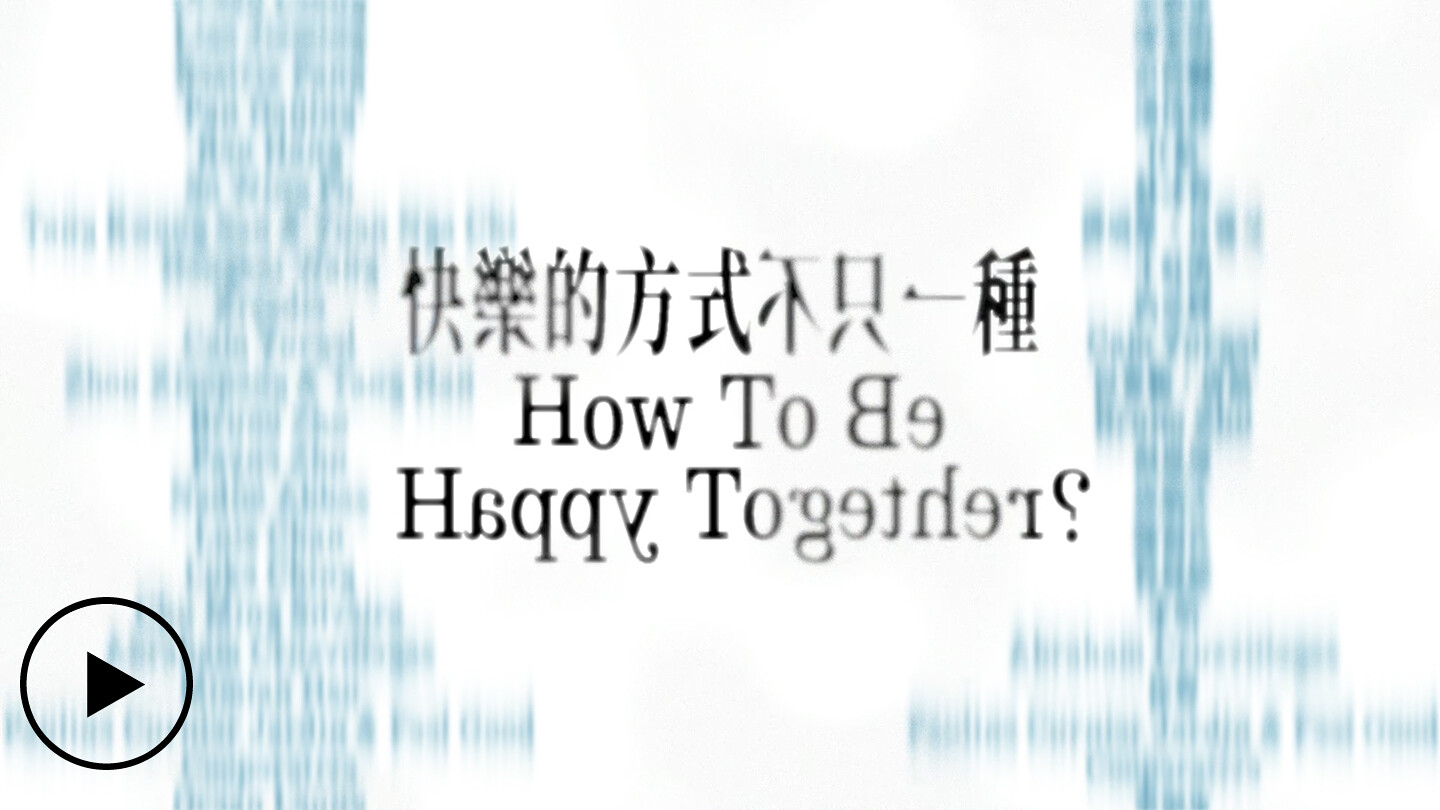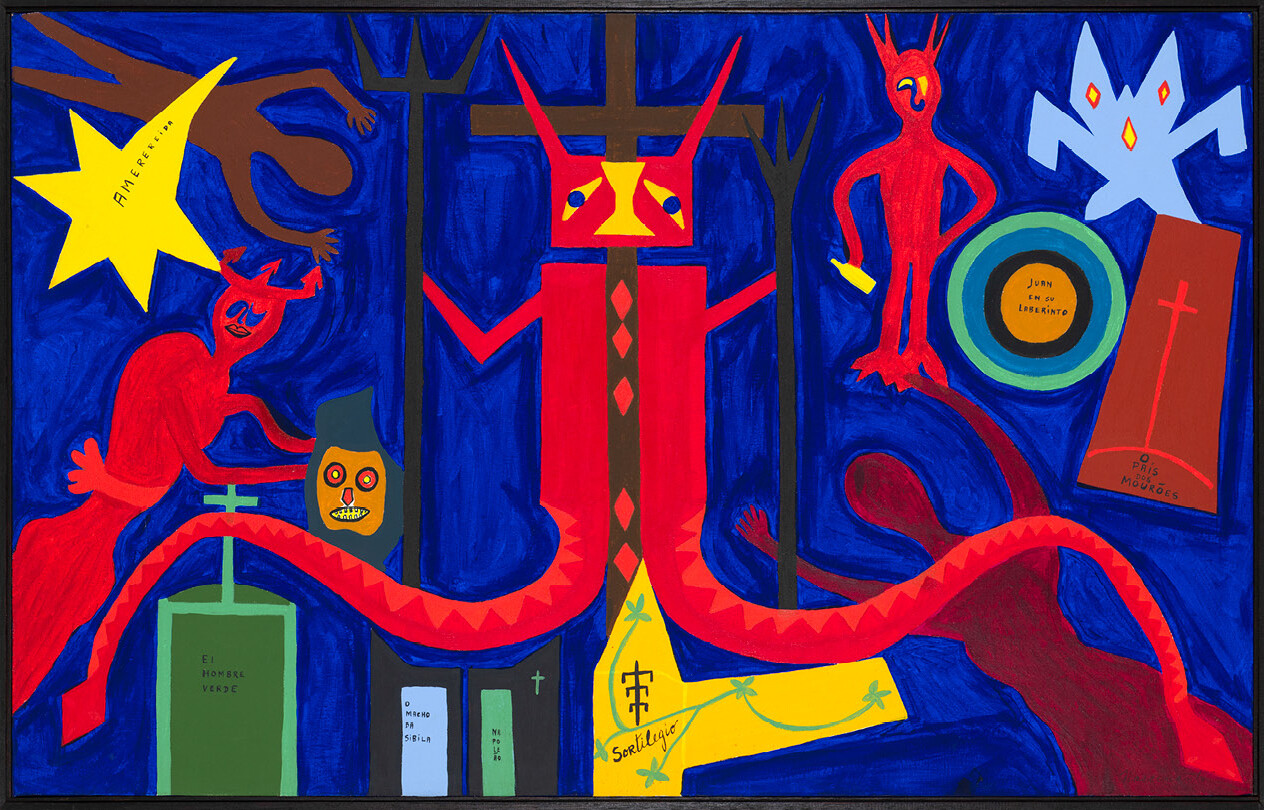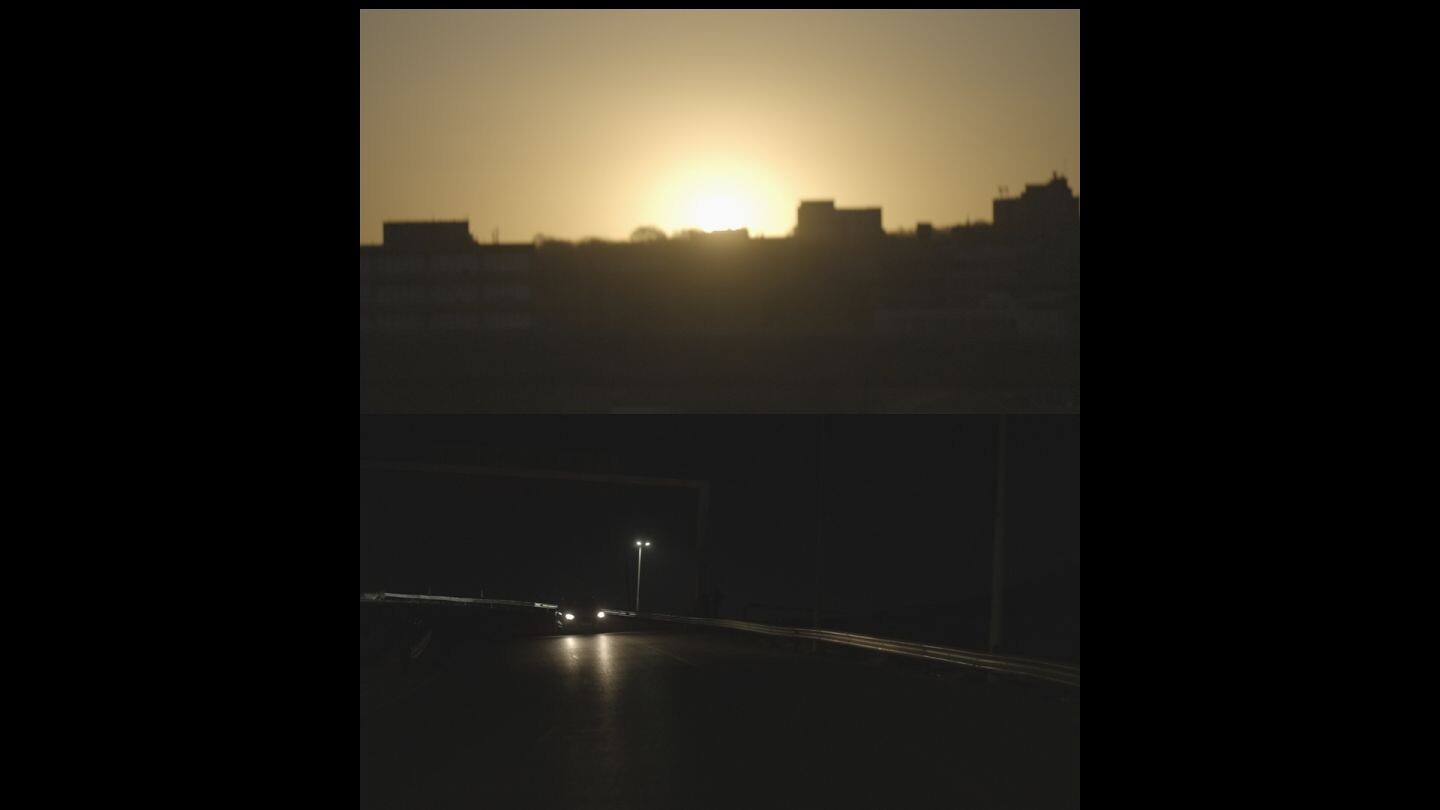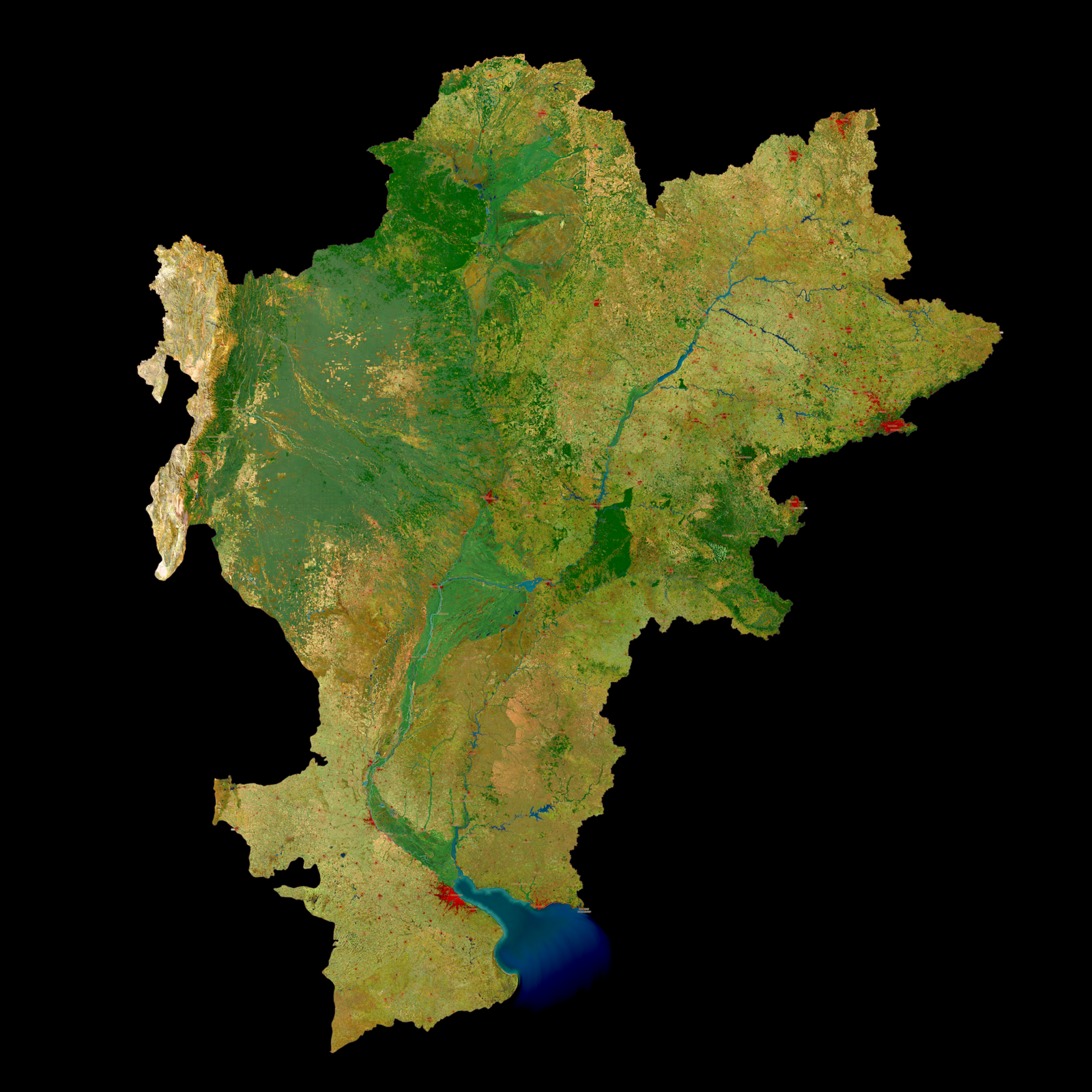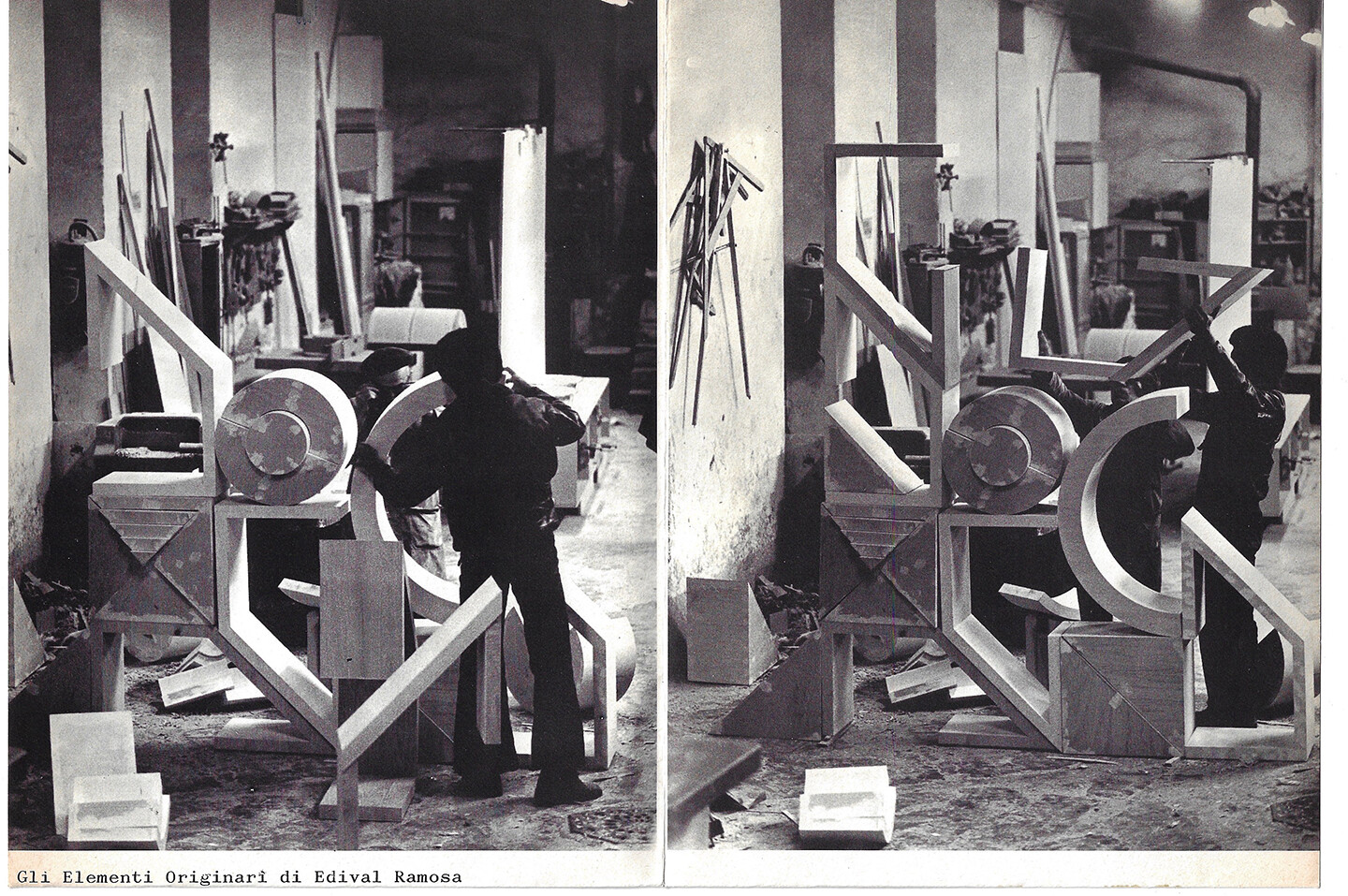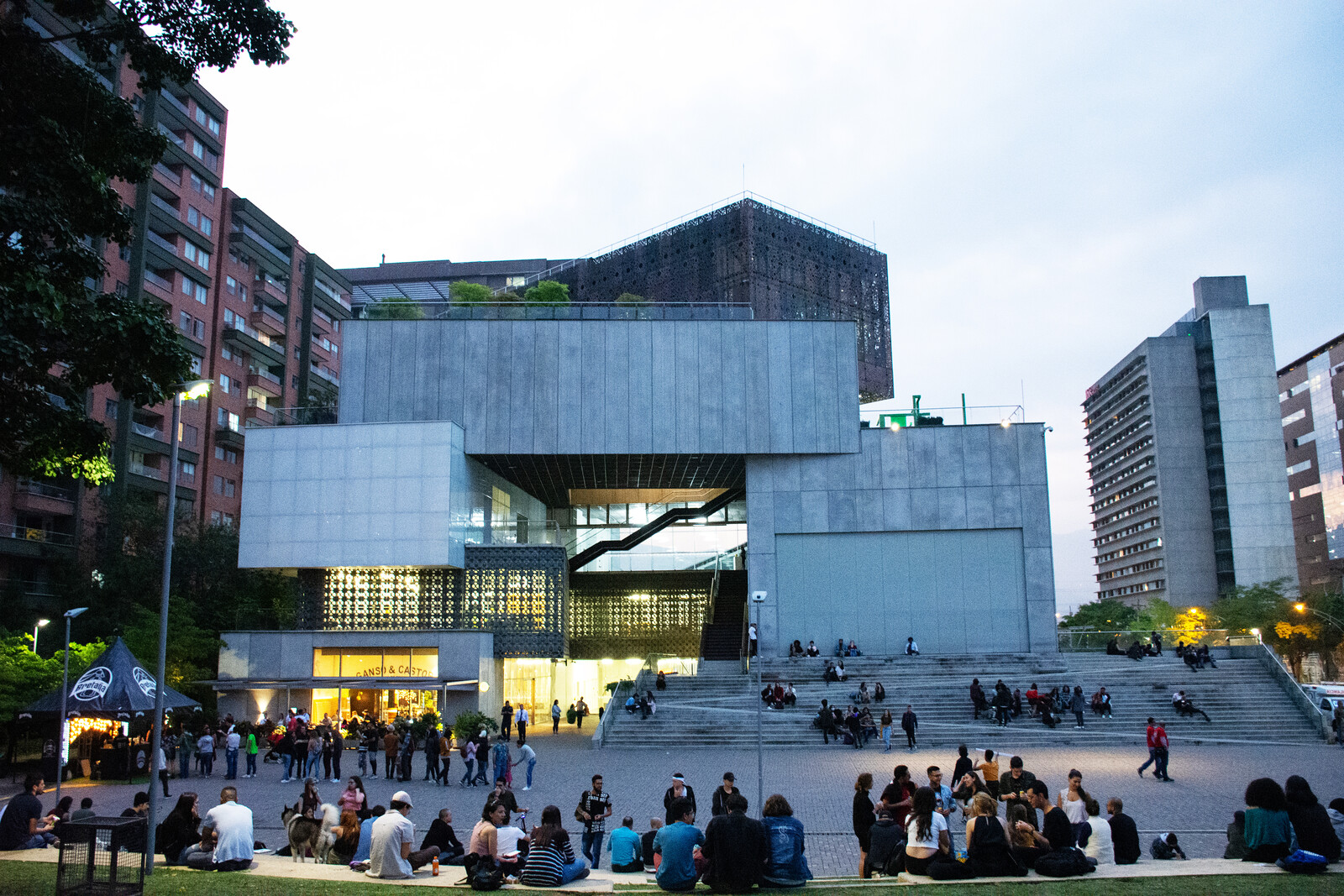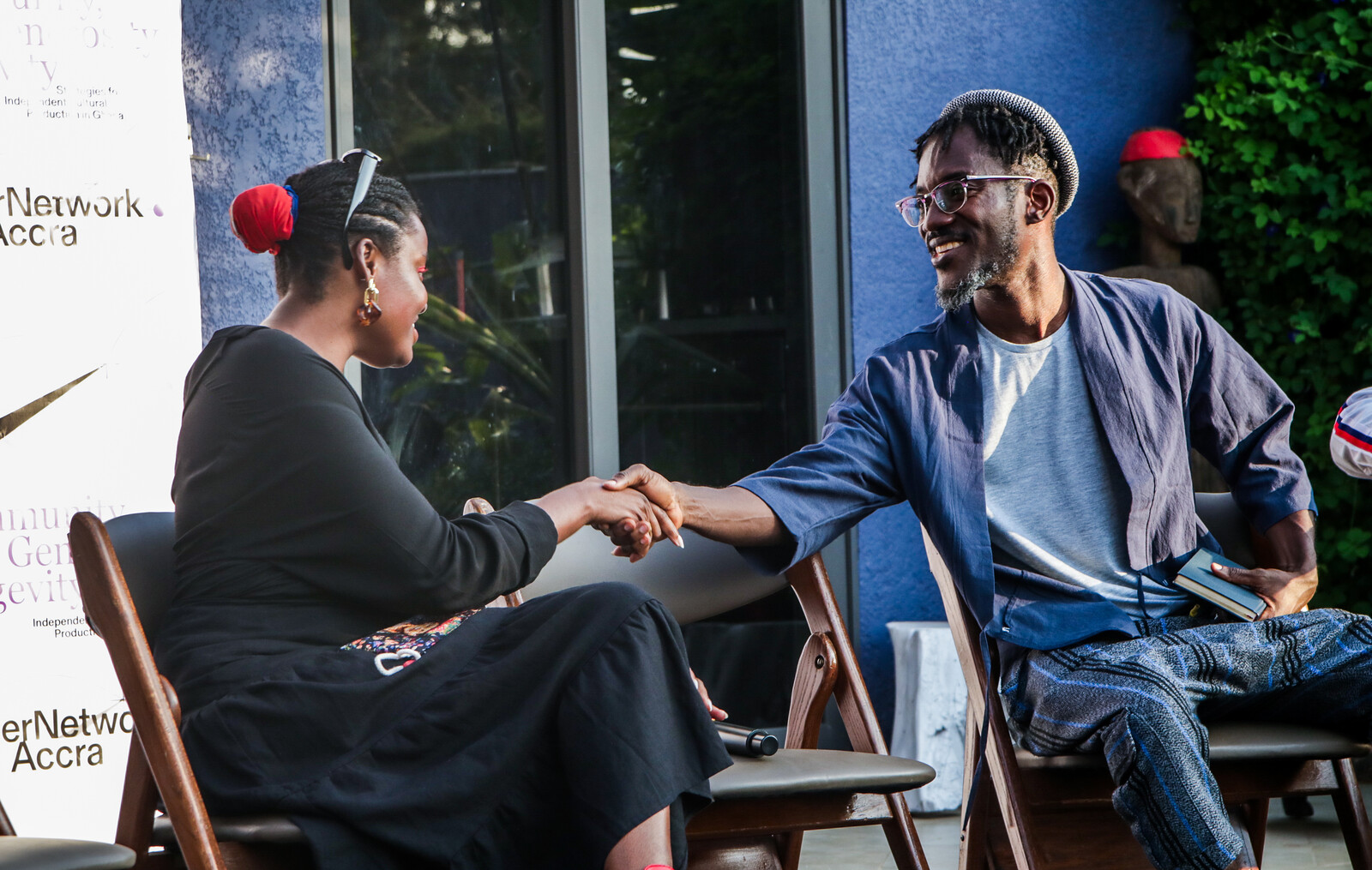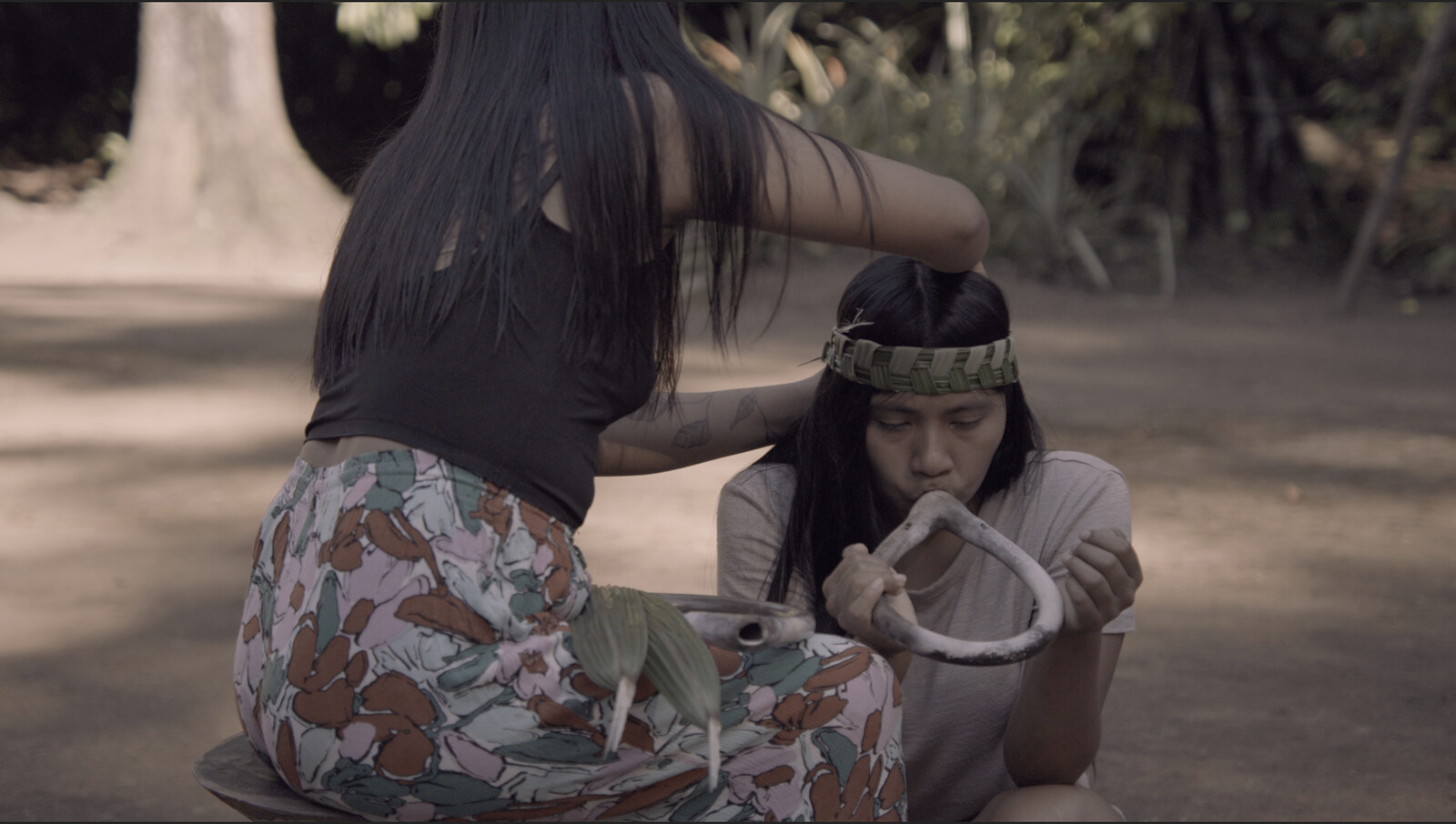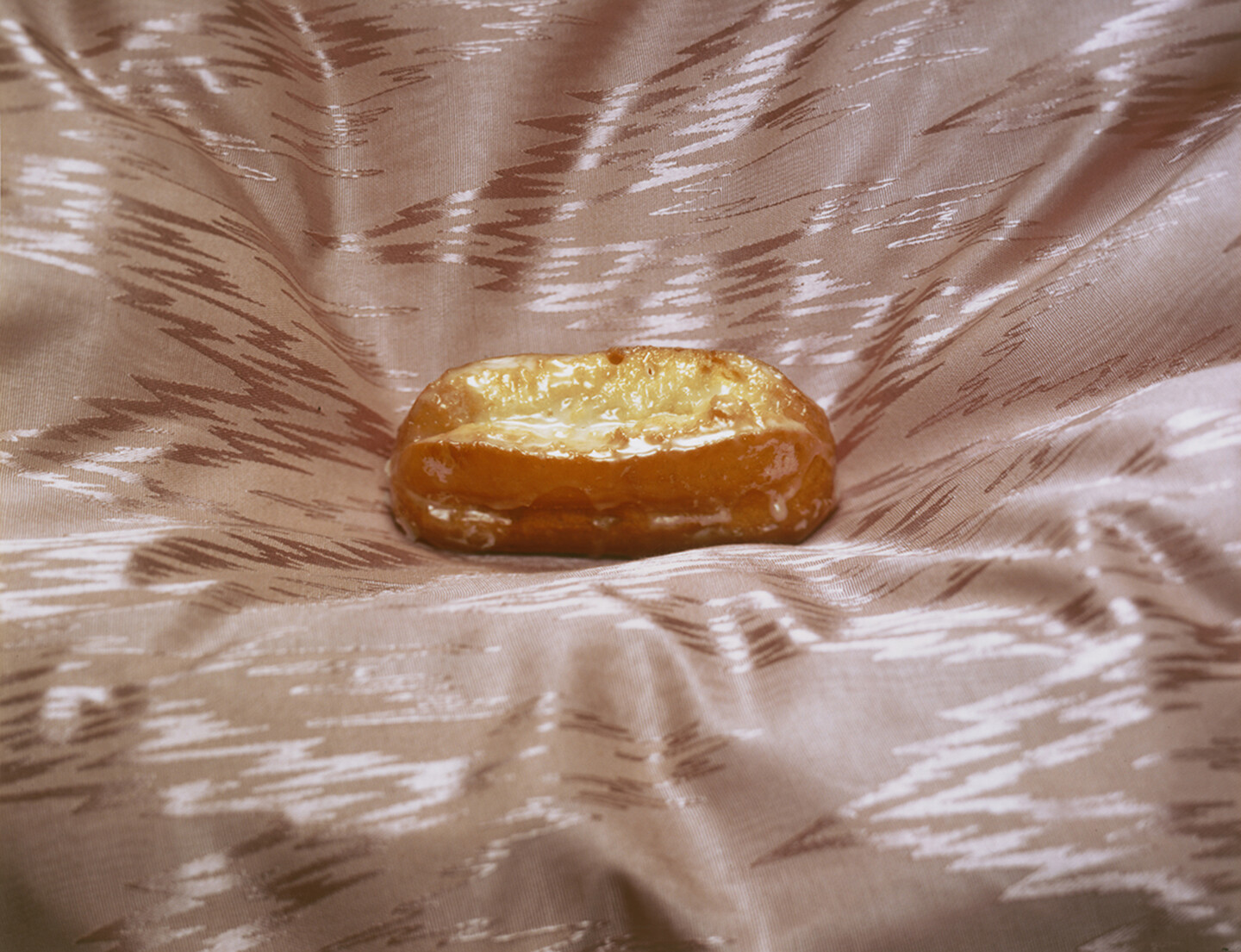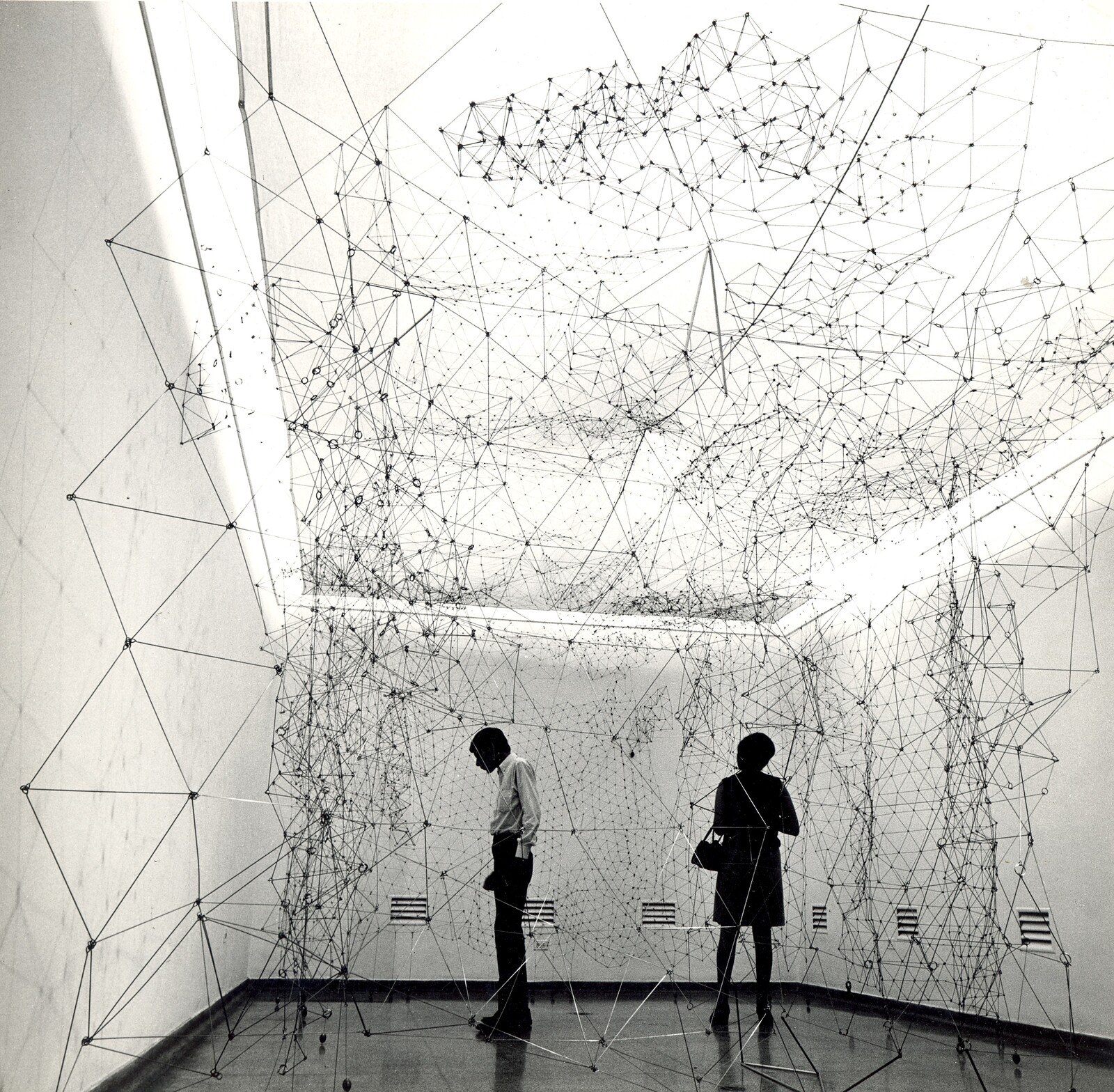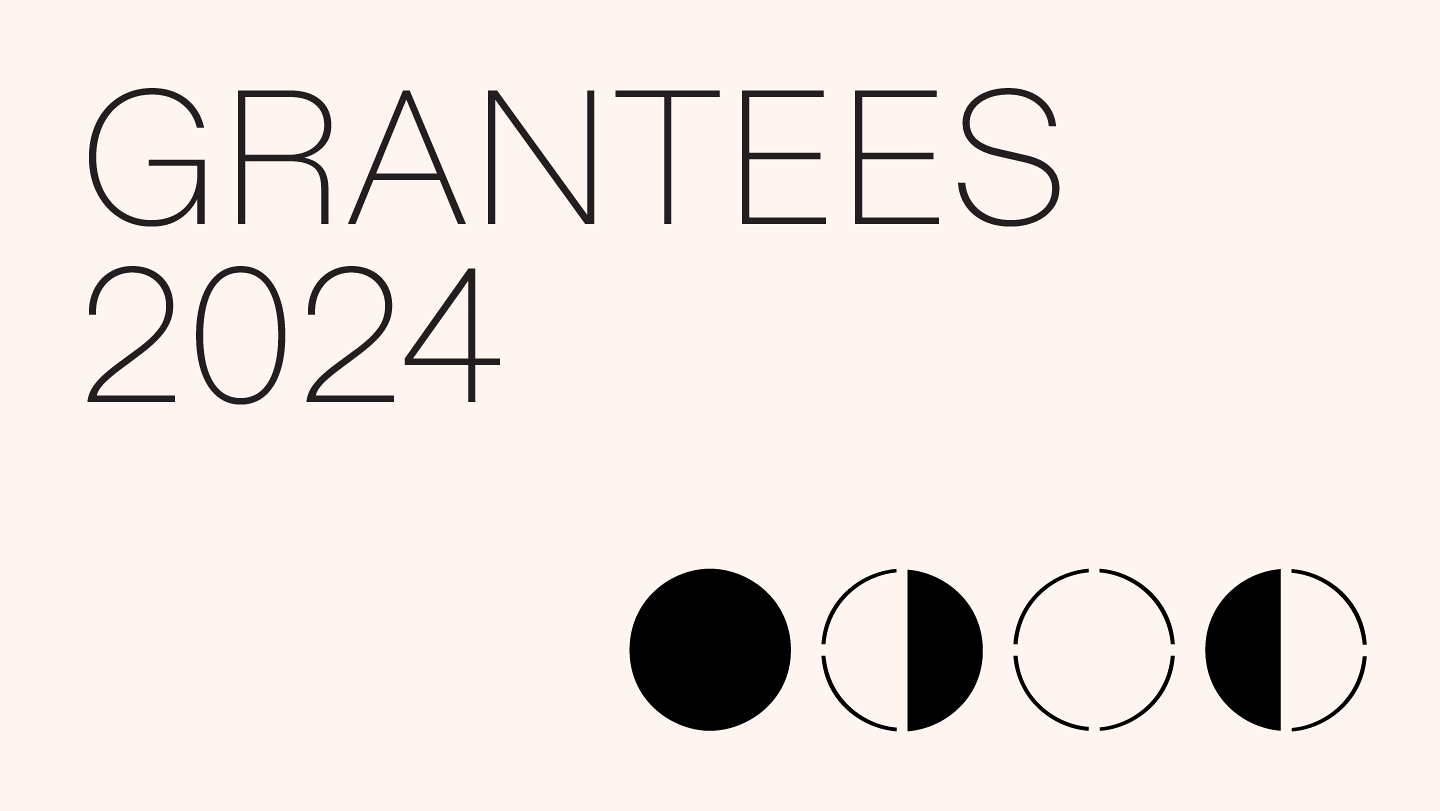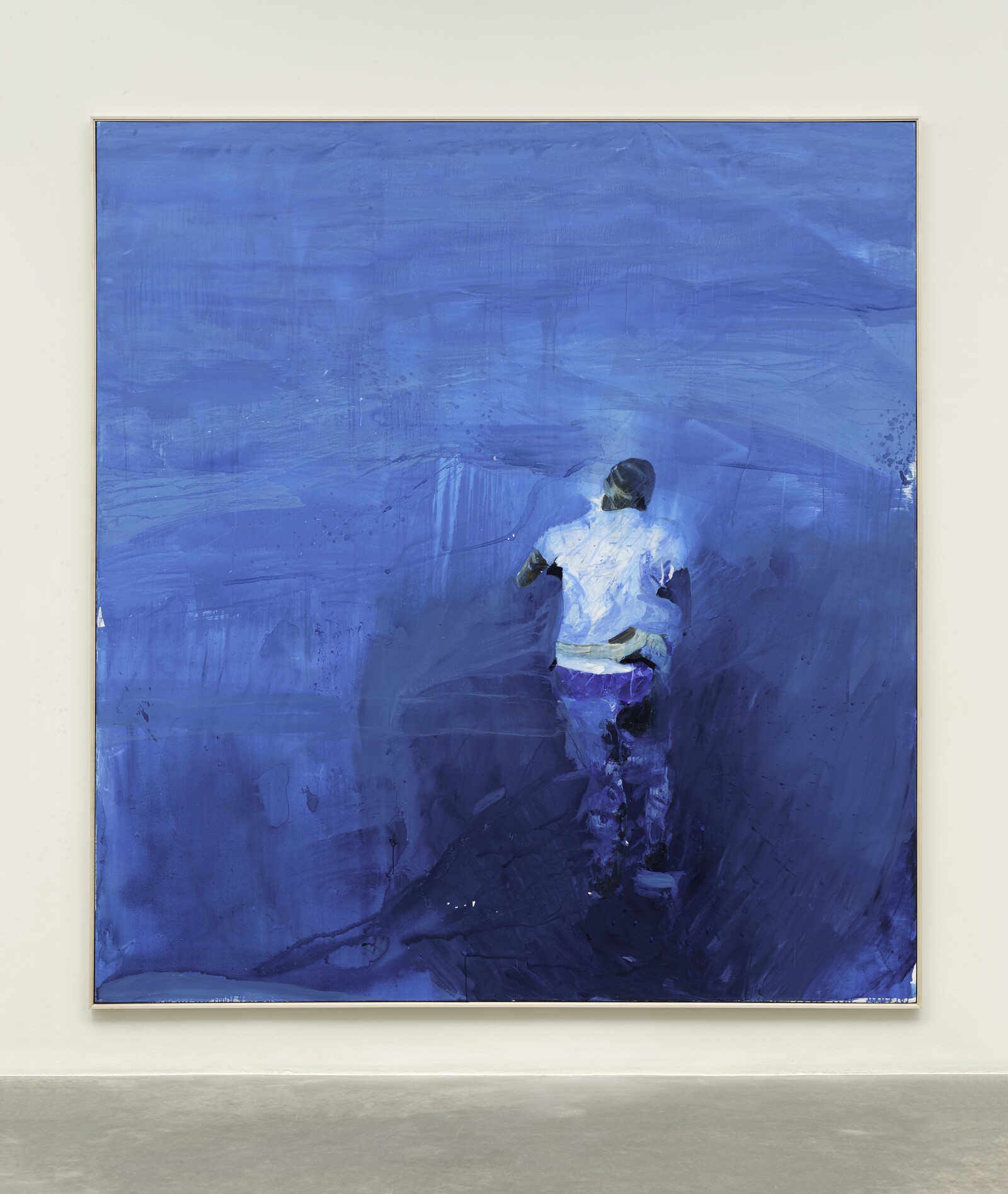The guinea fowl opens across all times, traveling through infinite spaces, emptying and filling itself with many nows of tomorrow and yesterday. It is a vessel and a chart in the unfathomable darkness of the present. On its wings are the stars of galaxies, the lights of UFOs, pores of a shared body stripped of death. Its wings hold what was lost and shattered, resisting the line or the closure in a curve. In this curve, time doesn’t arrive solely as doom; it can take the form of a spiraled prayer, a music-mosaic, a dispersed fragment reaching for the wind, the waves, the prompt ears that still don’t exist to hear—trance, trance, trance.
It is not by chance that Edival Ramosa’s New Totemic Construction sketch was made during a time of intense debate within the arts about what was considered “constructive” in Brazil and abroad. But Ramosa, with his proposition for a “new totemic construction,” was not trying to join that white lineage of geometric abstraction; he was rather thinking about the racial complexity of abstraction and how race’s structural relations could be expressed in a structurally ascendent—totemic—way.
The notion of nature as distinct from humanity, and as malleable, has radically changed the planet, bringing all its living systems to the brink of collapse. This continues to be driven by consumerism as the primary human relationship to one’s subjecthood. The result is individualist hedonism, the fantasy that death can be negated, and the mandate to pursue individual happiness while considering suffering as a personal failure. Clearly the food system we rely on and the chemical products we consume damage us and the planet. Why are we doing this to ourselves?
